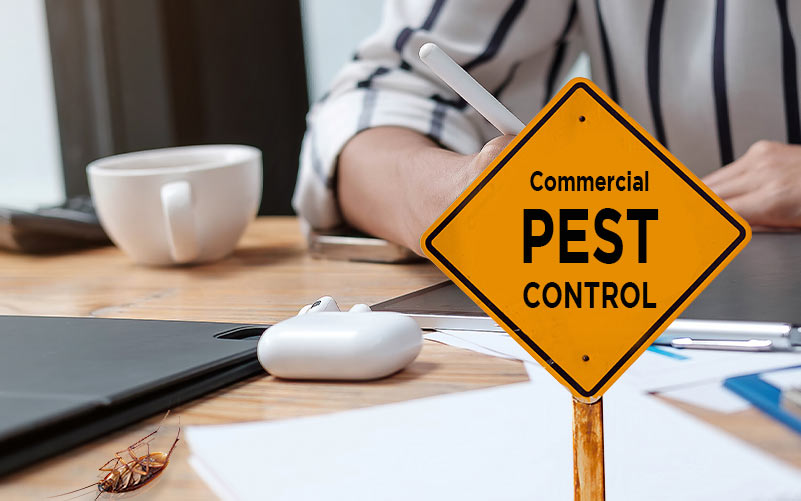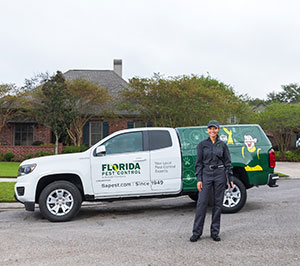Effective Pest Control Providers: An In-Depth Check Out Extermination Techniques and Prevention Steps
In the world of bug control services, the successful management of invasions needs a thorough approach that combines different strategies and actions for both obliteration and avoidance. From Integrated Bug Monitoring (IPM) strategies that prioritize lasting solutions to chemical elimination strategies designed for targeted removal, the arsenal against parasites is complex and vast.

Integrated Insect Management (IPM) Techniques
Integrated Pest Administration (IPM) Strategies include a comprehensive approach to pest control that focuses on control, prevention, and surveillance approaches to effectively take care of pest populations. By integrating numerous methods, IPM aims to reduce the impact of bugs while likewise minimizing the reliance on chemical pesticides. Prevention lies at the core of IPM, highlighting methods like appropriate hygiene, upkeep of health, and sealing access indicate deter parasites from infesting buildings. Tracking plays an important duty in IPM by regularly determining and examining pest degrees to identify the ideal treatment thresholds. Control methods in IPM prioritize using physical, organic, and social methods before turning to chemical therapies as a last option. These techniques consist of introducing all-natural killers, habitat alteration, and utilizing capturing tools to keep insect populations in check. In general, IPM fosters a lasting and eco conscious technique to pest administration, advertising lasting services that safeguard both human health and the ecosystem.
Chemical Extermination Strategies
Chemical extermination techniques are typically employed in insect control solutions to properly eliminate insect populaces that pose a risk to human wellness and home. These strategies include making use of numerous chemical materials especially made to target and remove bugs such as bugs, rodents, and other unwanted animals. The application of pesticides, insecticides, rodenticides, and various other chemical agents is very carefully regulated to guarantee optimum performance while lessening risks to people, pet dogs, and the setting.
Among the key benefits of chemical elimination strategies is their capability to provide fast and targeted outcomes, making them especially beneficial in situations of extreme invasions or immediate bug control demands - a1 residential pest control portland or bed bugs. Nevertheless, it is important to stress the relevance of appropriate handling, application, and disposal of these chemical items to prevent unplanned harm
Furthermore, incorporated insect administration (IPM) strategies usually combine chemical elimination strategies with various other approaches such as cleanliness, environment alteration, and biological controls to produce a lasting and thorough parasite control strategy. By incorporating chemical elimination techniques carefully within an IPM framework, bug control solutions can successfully handle pest populations while decreasing potential threats to human health and wellness and the atmosphere.
Biological Bug Control Methods
Utilizing natural killers and bloodsuckers to manage pest populaces is a lasting technique referred to as organic bug control. This approach utilizes the natural devices of the ecosystem to manage parasite populaces without counting on synthetic chemicals. One common biological control method involves introducing all-natural adversaries of the target insect varieties, such as ladybugs for aphid control or nematodes for termite invasions. These natural killers prey on the parasites, aiding to maintain their populations in a1 pest control in portland oregon bed bugs check.
One more reliable biological control technique is the use of microbial pesticides. These are naturally occurring bacteria, such as bacteria, infections, and fungi, that specifically target and contaminate specific parasite varieties. By making use of these microbial agents, pest populaces can be efficiently reduced without triggering or damaging useful microorganisms damage to the setting.
Physical Insect Prevention Procedures
Carrying out physical pest avoidance measures entails using obstacles and architectural modifications to prevent parasites from going into or infesting a home (a1 pest control portland bed bugs). One reliable approach is securing all possible entry factors such as voids around doors, windows, and utility penetrations. Setting up door sweeps, displays on home windows, and sealing splits in the foundation can aid protect against bugs like bugs and rats from accessing inside. Furthermore, keeping a clutter-free and tidy environment is important as bugs are attracted to food sources and hiding areas. Consistently examining and repairing any kind of damaged screens, vents, or roofing floor tiles can likewise aid in keeping insects out.
An additional physical avoidance procedure is the use of barriers like secure fencing to maintain bigger insects such as raccoons or deer away from the home. By executing these physical bug prevention steps, residential property owners can substantially minimize the danger of bug problems and the damage they can cause.
Specialist Bug Evaluation Treatments
Carrying out methodical and thorough pest examinations is a fundamental aspect of specialist pest administration methods. Professional parasite inspectors are trained to thoroughly analyze homes for signs of invasions, identifying pest species, access points, and favorable conditions. The assessment process usually begins with an extensive analysis of both the exterior and interior of the facilities. This includes monitoring for bug droppings, gnaw marks, nests, and any architectural damage that may indicate pest activity. Additionally, inspectors might make use of specific tools such as wetness meters and borescopes to spot concealed infestations within wall surfaces or crawl areas.

Conclusion
To conclude, effective bug control services employ a range of techniques, including Integrated Bug Management approaches, chemical extermination techniques, biological controls, and physical avoidance steps. Professional parasite examination treatments play a crucial role in determining and dealing with pest problems in a prompt way. By implementing a mix of these approaches, homeowner can successfully stop and handle pest infestations.
From Integrated Parasite Monitoring (IPM) methods that focus on lasting solutions to chemical extermination strategies designed for targeted elimination, the arsenal versus bugs is vast and diverse.Integrated Bug Administration (IPM) Strategies encompass a comprehensive approach to pest control that concentrates on tracking, control, and avoidance methods to effectively manage parasite populations.Chemical elimination methods are commonly employed in parasite control solutions to efficiently remove parasite populaces that present a hazard to human health and wellness and residential property.Utilizing all-natural predators and bloodsuckers to take care of parasite populaces is a lasting approach recognized as organic insect control.In final thought, efficient bug control services use a range of strategies, consisting of Integrated Insect Monitoring methods, chemical extermination approaches, biological controls, and physical avoidance steps.